OSRT is proud to recognize the following members nominated for the upcoming 2017 ASRT Chapter Delegate and AEIRS elections! Voting for the ASRT election will take place Febrary 9 - March 2, 2017. AEIRS online voting is available between February 15 - March 14, 207. All active members may vote. Your vote counts. Go vote today!
AEIRS Director-at-Large
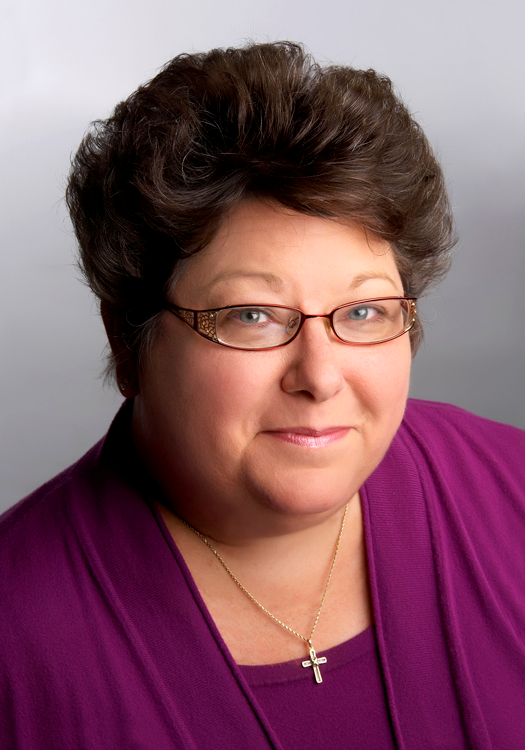 Julie Gill, PhD, RT(R)(QM)
Julie Gill, PhD, RT(R)(QM)
Chairperson and Professor
University of Cincinnati Blue Ash College Cincinnati, Ohio
I believe that AEIRS can help transform imaging and radiologic science technologists to quality educators by providing skills, strategies, and tools to advance their professional practice in academe. The education, network, and resources provided by AEIRS helped me to move from saying, "I am a radiographer." to "I am an educator." AEIRS was instrumental in this transition by helping me to understand and communicate the value of changing lives through education.
My depth of experience with AEIRS, the ASRT and OSRT allows me to bring a unique skill set to the Board of Directors. I learned about management and operation of tax exempt organizations, as well as strategic planning, financial analysis, legislative advocacy, event planning and member services. My previous service with AEIRS afforded me the opportunity to do an in-depth review of the strategic plan and bylaws which allowed me to learn a tremendous amount about the organization.
My goals for AEIRS include providing members with opportunities to learn about cultural awareness and inclusion. I also believe that skills for providing quality online education is imperative in today's digital environment and that those new to the teaching profession desire practical resources for classroom management, policy enforcement and student coaching.
ASRT Education Delegate
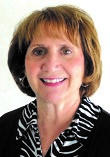 Janice Gibson, M.Ed., R.T.(R)
Janice Gibson, M.Ed., R.T.(R)
Senior Program Director, Radiology Department
Kent State University at Salem
I served as the Education Chapter vice chairman and delegate in 2010-2011 and as the Education Chapter delegate in 2011-2012. In 2012-2013, I was a member of the ASRT Curriculum Project Group for the B.S.R.S. curriculum. I attended the ASRT Leadership Academy in 2006. I was the Ohio affiliate delegate in 2003-2007, served as the president of the OSRT in 2005-2006 and was voted the Technologist of the Year in 2006. I have served on OSRT committees, including the education committee. In 2012 and 2016, I co-chaired the OSRT annual meeting. I participated with OSRT educators who sent recommendations concerning the ARRT Radiography Content Specifications. I received a master's of education in health education and promotion from Kent State University in 2001. I also served on a local board for a safe haven for victims of domestic violence. I currently participate in local food drives.
The top issue facing the ASRT and the radiologic science profession is to continue to build solutions for technologists who will need continuing education to meet the 16 hours of structured education required by the ARRT. Also in the next five years, the ARRT will require completion of the Continuing Qualifications Requirements (CQR) by technologists seeking re-certification. This will require continuing education products that can serve radiology professionals as they navigate that process. The ASRT currently serves as the leader of product development for these requirements, but must continue to meet the needs of all technologists, sonographers and radiation therapists. Another issue facing education in the radiography profession is the replacement of retiring educators with qualified instructors who can continue the tradition of quality education. Mentors are vital to this process.
ASRT Education Delegate
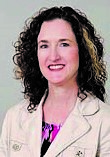 Heather Moore, M.Ed., R.T.(R)
Heather Moore, M.Ed., R.T.(R)
Program Director, Allied Health Department
University of Cincinnati
I have served as an ASRT Chapter delegate in both Radiography and Education, plus as an affiliate delegate for Ohio. My experience in serving on the board of directors for my state society, both for the business association and the foundation, has been extensive and has included serving on many committees. I genuinely love to serve my profession and hold great pride in the fact that I am able to act in ways to make a difference for those R.T.s who follow me. I do this by staying current on practice issues and by fully understanding the issues that are presented for a vote at the House of Delegates meeting.
I feel that our profession reflects a very nondiverse workforce. This is evident from the U.S. Bureau of Labor Statistics data, yet this type of information is not collected by the American Registry of Radiologic Technologists or other professional radiologic technology organizations. This is concerning since literature shows the lack of a diverse workforce allows health disparities to remain and flourish. I am passionate about finding ways to reshape the health care workforce by conducting research into steps that educators can take at the program admissions level to improve diversity. I also plan to encourage our professional organizations to collect more demographic data so we can take a grass-roots look at the current representation of the profession to better gauge the issue of a nondiverse workforce.
ASRT Management Delegate
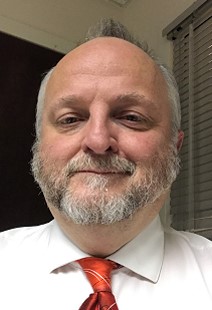
Gary Greathouse, M.S., R.T.(R)
Program Director, Radiology Department
Mercy Medical Center
I am the alternate delegate for the Management Chapter. I have been active in the chapter since 2009 in various capacities, including as an alternate delegate, delegate, vice chairman and steering committee chairman. I have helped to bring to the chapter such ideas as the productivity model and the management modules to assist new leaders and veterans in the profession. I have worked with RAD-AID while in Kenya in 2013 on radiology data gathering and humanitarian aid. I also have visited Honduras as a CPR instructor with Central American Medical Outreach in 2004, 2006 and 2008. I respectfully ask for your vote. I am a hard worker and passionate about helping others in need.
I feel the biggest issue facing the radiologic sciences is the quick turnover of imaging information. We live in an age of increased productivity, doing more with less, declining reimbursement issues and evolving technology. All these conditions make it difficult for managers and staff. The best way to address these changes is through the information and education of both managers and staff. Together, we can work toward an exciting future that will be beneficial for all. I again ask for your support and will enlist your voice to address these concerns together. Thank you.
ASRT MRI Delegate
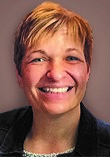 Kristin Seitz, R.T.(R)(CT)(MR), MRSO
Kristin Seitz, R.T.(R)(CT)(MR), MRSO
MRI/CT Technologist, Imaging Department
Ohio Health Westerville Medical Campus
I have been an MR technologist for over 25 years and have seen tremendous change within the profession. I sought certification as an MR safety officer in order to improve my understanding of safety issues and to better apply them to day-to-day patient care. I serve on the MRI Innovation Council for our organization to approve policies and improve workflows and patient safety across our locations. I also am active in the ASRT MR Community, the SMRT MRI Listserv and the MRI safety group on Facebook. I have also presented to a women's group on breast MRI, and to high school students on MR basics. As a member of the Ohio Society of Radiologic Technologists Health Policy Committee, I hope to gain insight into state issues that affect our profession. I have returned to college to pursue my bachelor's degree in hopes of continuing my career as an educator.
I feel that the top issues for our profession are the uneven R.T. licensure and educational regulations at the state levels. Until I returned to college and started researching and interacting with radiologic technologists outside of Ohio, I did not realize how inconsistent regulations were and that some states have no requirements at all. In order to protect our profession and ensure its future, we must come together and mobilize as a group. Insisting on minimum education requirements and licensure not only protects us, but better serves and protects our patients. The recent proposal by the VA to allow advance practice nurses to order, supervise, perform and interpret imaging studies demonstrates how easily our profession can be eroded. To allow staff whose expertise is not radiation safety and protection to perform our job is a disservice to the public.
ASRT Nuclear Medicine Delegate
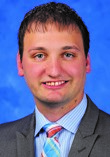
Lucas Gross, M.S., R.T.(N), CNMT, NMTCB(CT)
Instructor, Nuclear Medicine Department
The University of Findlay
After graduating, I began working in the field at a large academic teaching facility. My primary responsibility was clinical, but I take additional responsibility to help develop and implement improvements in diagnostic protocols, enhancing image quality and reducing the patient's radiation dose. I initiated an internal website for our department that helped to centralize, standardize and provide access to our imaging protocols. I presented lectures on nuclear medicine to cardiology fellows and offered job shadowing to radiology residents, which they find useful in understanding techniques and procedures. My professional outreach extends beyond the clinic through presentations at continuing education events. I recently changed roles in nuclear medicine, becoming an instructor at a nuclear medicine technologist program. I am a current member of Phila, ASRT, PSRT and OSRT. I am currently a member of the OSRT Technology and Innovations Committee. I recently completed a master of science degree in health informatics.
One of the challenges facing the chapter is the proliferation of hybrid fusion modalities, such as PET-CT, SPECT-CT and PET-MRI. Optical imaging soon may join in. Pathways must be developed and implemented through relevant boards that would prepare technologists for cross-training in relevant modalities of hybrid cameras. I would like to work through ASRT committees to organize this process in order to facilitate career development for technologists who would be prepared to provide quality service to the patients. This requires immediate attention before the third-party payers and general public begin to scrutinize this area of imaging, which may possibly lead to reimbursement cuts and job losses. I would like to represent the nuclear medicine stakeholders and ensure that high-quality care and standards of care are maintained.
ASRT Radiography Delegate
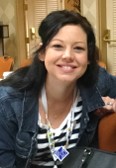
Tiffany Roman, M.A.Ed., R.T.(R)(CT)(MR)
Assistant Professor and Clinical Coordinator, Allied Health Department
University of Cincinnati
I have been a radiographer for 17 years. Over the past couple of years, I have taken the opportunity to embrace the leadership roles I once shied away from. I have had the opportunity to serve as an alternate delegate for the Radiography Chapter and to take part in the practice standards revision process. I am a graduate of the ASRT Leadership Academy and hold several appointments in both the Ohio affiliate as well as the ASRT. I work very closely with many technologists and facilities around the Cincinnati area, instructing first- and second-year radiography students. I am familiar with many different types of radiography equipment and standards of care. As well as the professional work I do, I also have a deep passion for the radiography profession. I believe in sharing this passion with my students and the technologists throughout the United States.
I think one of the biggest challenges faced by the entire diagnostic medical imaging profession is the lack of knowledge and respect for the profession. In the past few years, I have been very involved in the promotion of the profession through my work, the education of clinical technologists, students, legislators and individuals outside the medical imaging profession. I serve the OSRT and ASRT in capacities that allow me the opportunity to disseminate this information. I co-founded the Interprofessional Education Steering Committee to start the education of medical professionals and their scopes of practice. I serve on committees and attend meetings to explain to nonimaging professionals the importance of having educated, certified and licensed professionals exposing individuals to radiation. This is a tough battle we will continually fight for a long time, because it is going to take education, re-education and patience.
ASRT Sonography Delegate
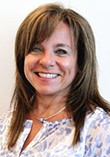 Debra Myers, M.Ed., R.T.(R), RDMS, RVT, RDCS
Debra Myers, M.Ed., R.T.(R), RDMS, RVT, RDCS
Director of Medical Imaging Program, Allied Health Department
Marion Technical College
I have been a registered radiographer for over 30 years and hold ultrasound credentials in abdomen, OB/GYN, breast, cardiac and vascular. I am the program director for the School of Radiography and Diagnostic Medical Sonography Program and I earned a master's in education. I am very passionate about the medical imaging field. I am an advocate for my students and patients as well. I am the current sonography chapter vice chairman for the ASRT. I am a past sonography delegate. I also served on the sonography practice standards subcommittee. I am interested in sharing my experiences and learning from the experts who are associated with the ASRT. I am appreciative of the opportunity I have been given and I enjoy paying it forward. I currently serve on the Downtown Marion board. We are dedicated to the revitalization of our downtown area.
Our world is so ever-changing. We need to teach professionalism and diversity to enhance the skills of technologists. So, as a community of health care providers, we have a better understanding of our patient's cultures and beliefs. We need to be the change — leading by example and not opinion.

